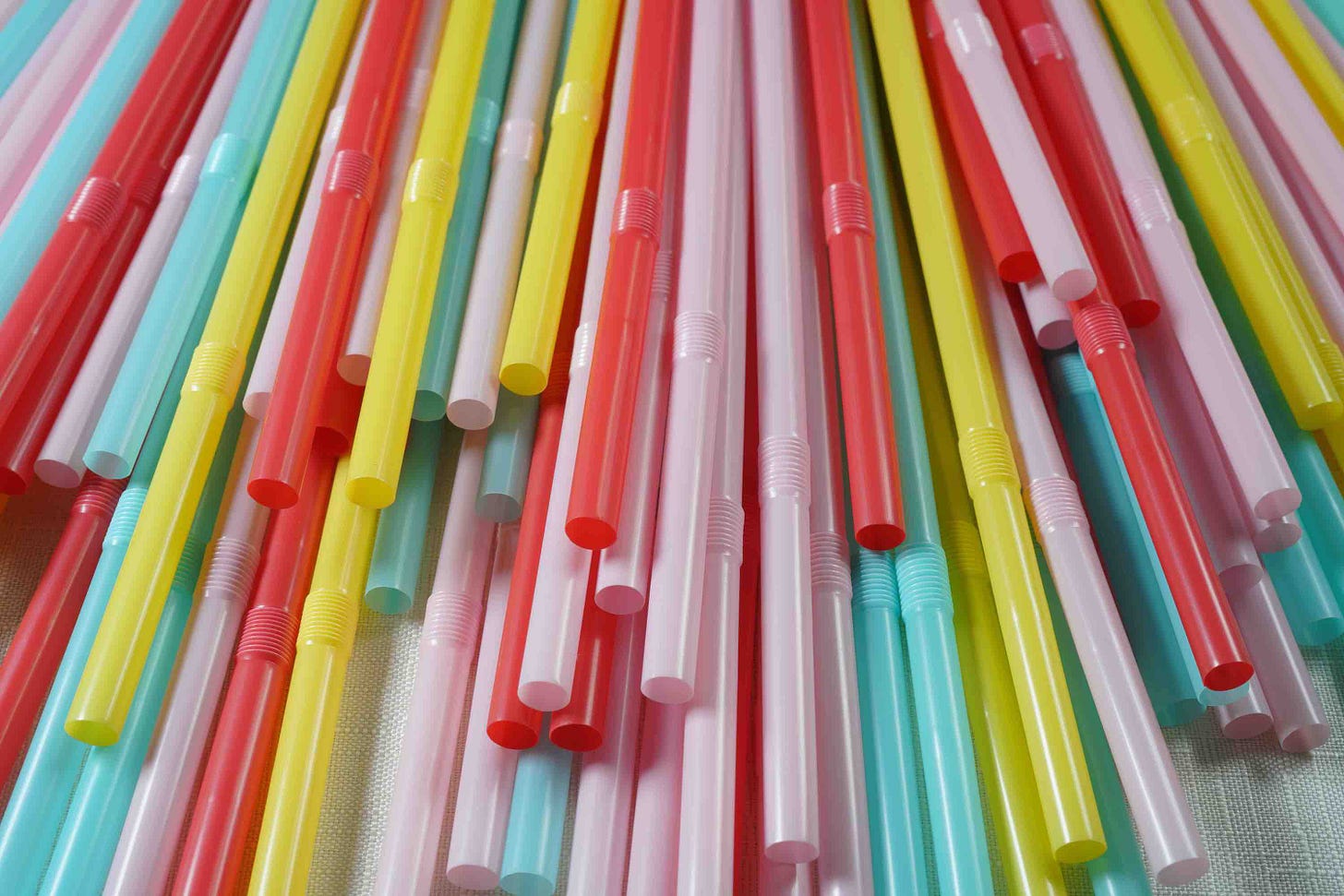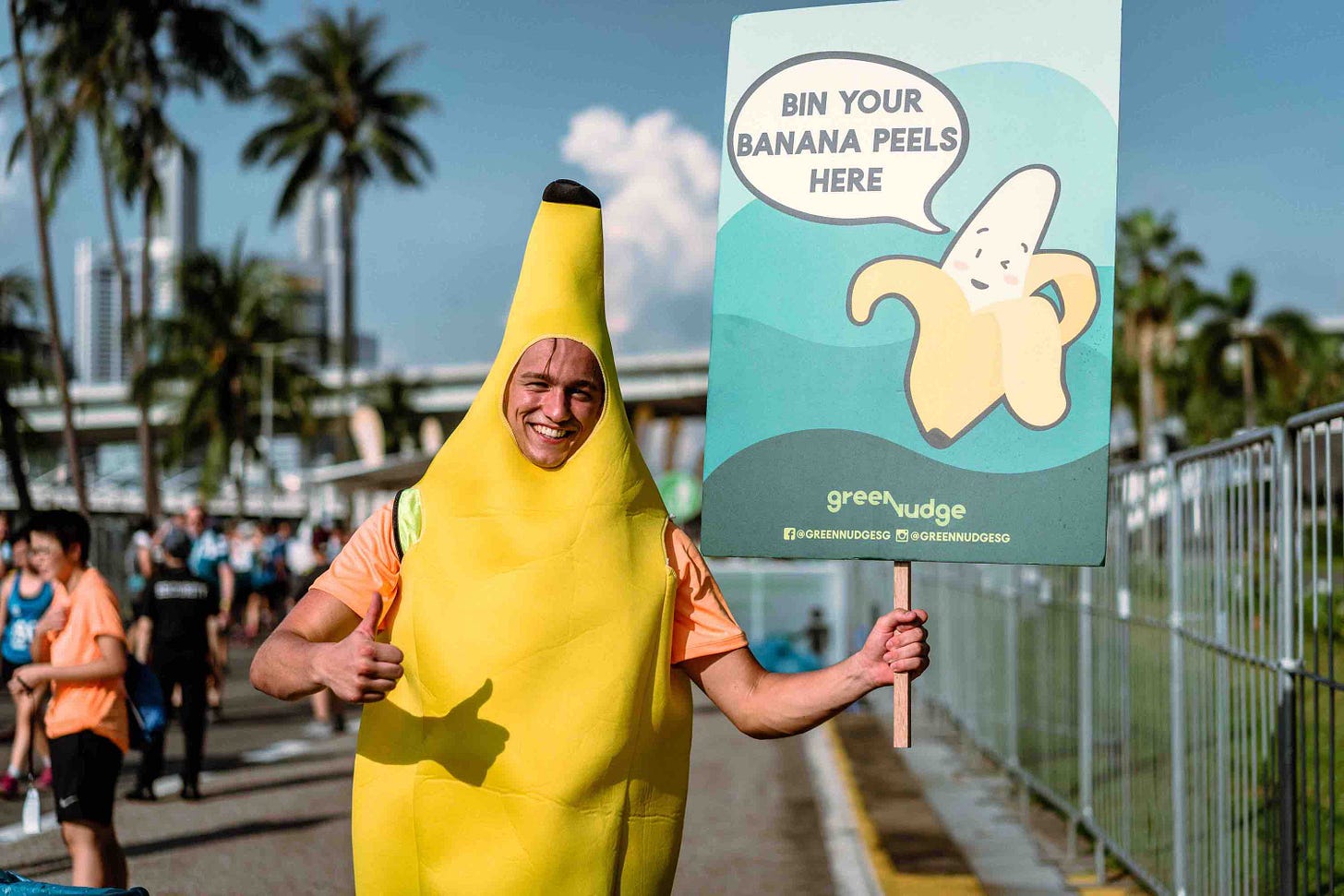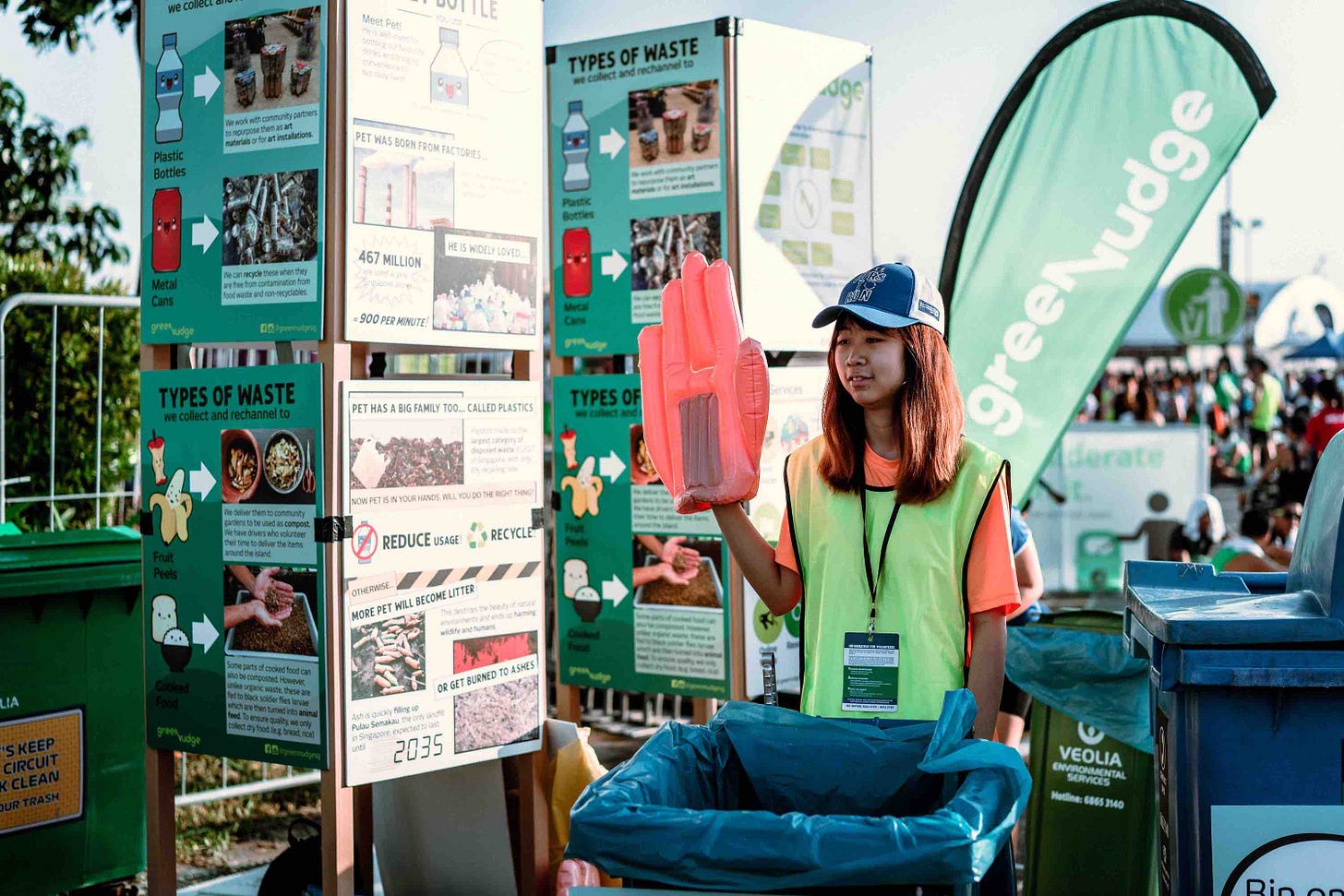Planning an event? You might be forgetting a few important things
Like waste disposal, says Heng Li Seng of Green Nudge, who shares concrete ways for us to reuse, reduce and recycle even before the party starts
Events. Parties. Dinners. Gatherings. Big or small, loud or intimate – whatever the type or scale (and whatever you want to call them), they’re great ways to get people together to socialise, support a cause, and have a good meal.
That is, until you see just how much waste they generate.
No one knows this better than Heng Li Seng, the founder of Green Nudge in Singapore. He established Green Nudge in 2018 “with the vision to be an enabler and changemaker in creating societal transformation through behavioural nudges to achieve sustainable or green practices and behaviour”.
“We act as a consultant to help companies go green by providing green event solutions,” Li Seng adds. “These include reducing the amount of waste generated from such events, and also finding ways to reuse and recycle them.
“In addition, we also organise learning journeys to raise awareness on the waste landscape in Singapore, and explore ongoing efforts to tackle these issues. These include visiting green places of interest like the Semakau Landfill, and hands-on activities like coastal cleanups and workshops. In doing so, we change the way we learn and deal with waste in Singapore.”
Your event, revamped
So did you ever stop to think about what your celebration might mean for the environment? If not, no worries, because you can start doing things differently with your next one. Here are Li Seng’s top tips and recommendations for holding a zero-waste event from start to finish.
#1 Reduce
“It’s always the first thing to do. Reduce the potential amount of waste by planning and forecasting the amount of items that you need, such as setup materials or food. It’s easier to do this before, rather than after, the event.
“The festive season is upon us, and potluck and buffet catering are convenient ways to hold a gathering – but the amount of food is usually more than (the people) catered for. Plan ahead to have some containers to bring back the food, and prolong the joy after the event. For larger events, this could even mean communicating to your supplier that you’d like bulk instead of individual packaging (e.g. for shirts).
“In our case, planning ahead means we can bring in partners and volunteers who’ll be able to transport items such as banana peels (gathered from marathons) and send them to community gardens as compost.”
#2 Communicate your intent to go zero waste with your attendees
“Going zero waste requires the effort of everyone, so letting them know ahead of time and being specific about what it means – such as setting up recycling bins, or bringing your own bottle or cutlery – will greatly boost your success rate.
“As the organiser, you have the ability to influence everyone’s decisions and habits before the event. This includes letting them know (about going zero waste) during the event either with signs or a verbal announcement. Explaining why you’re doing it also helps you to connect with your participants and encourage them to do it too.”
#3 Bring your own cup, cutlery or plate
“Encourage participants to bring their own items to reduce the amount of waste. Even better, let them know that these items will not be provided.
“Many of us are so used to disposable items that many tend to use them excessively, such as multiple cups during an event. Because the waste is cleared regularly, it’s hard for us to appreciate the amount of waste generated.
“For organisers who wish to go one step further, they could charge a small fee for using or renting reusable items. This sends the message that every item counts, and will help ‘nudge’ participants to bring their own.”
#4 Make it intuitive to go green
“Our experience shows that it’s easier to go green when the messages to do so are clear. For example, instead of saying ‘recyclables here’, state the items that are recyclable during the event and place them on the recycling bin (‘100 Plus cans’ or ‘clean cups’).
“This helps to address any confusion about the item that should go in the bin (e.g. 'no food-related items or items contaminated with food should be in the recycling bin'), as well as raise awareness on items that are commonly seen as recyclable but actually aren’t, like paper cups (these have a layer of plastic that’s difficult to remove) and tissue paper.”
#5 Build up a norm by making it a regular feature
“Despite the time and effort you’ve planned to make it a zero-waste event, there are bound to be people who may not have gotten the message. Don’t be discouraged; give it a try to see how you can make it better each time.
“By making it a recurring theme, it helps to build up an expectation that the event is a zero-waste one. It starts a norm for you and your team.”
#6 Collect some data and set goals
“If you intend to do this regularly, it helps to collect some basic data. For example, how much trash did you collect at the end of the event? What proportion of your items were properly collected for recycling? This helps you to share with your participants how you’re doing it, and how their actions make an impact towards the overall weight.
“You could also set some goals the next time you hold a similar event – like aim to reduce the overall amount of waste by 10 per cent, or go cup-less. All of these small wins help to build up your goal of making it zero waste.”
There are challenges
But then how do we keep it up, not forget stuff, and know which things to prioritise so that we can be more eco-conscious about our gatherings?
Li Seng acknowledges how tough it can be. “It’s one thing to be environmentally conscious for one session, and another to carry it out regularly,” he observes.
“It’s so convenient to have others provide new and disposable cutlery, or to throw away the trash – out of sight, out of mind. It doesn’t help that we’re rewarded for these efforts nowadays. See how many food delivery apps we have, which reward you with cheaper prices than if you were to buy them on your own.
“The thing about having these reusable items is to use them. It’s easy to be discouraged when there are disposable alternatives available, or when you’re too tired to wash them. First, it doesn’t justify your purchase, and second, it makes it seem like a fad, which is sadly not helping the cause.
“Just like how we’re used to certain habits such as brushing our teeth and bringing our keys when we head out, we should make sure that we keep sustainability second nature in our planning and execution.”
We can all contribute
At Green Nudge’s projects and cleanups, Li Seng has come across people who don’t see the point of their efforts at all. And it can be heartbreaking.
“‘Let the government do it’ or ‘What does it matter if it’s just one more disposable item?’ are just some of the feedback I’ve received,” he recalls.
“Policies from the government will take a while to be implemented, and while they do their part, it also takes two hands to clap. Organisations and businesses who are far-sighted will understand that they too have a responsibility to go green, and to reach out to customers (which include other corporates too) who are increasingly placing sustainability as part of their purchasing considerations. And if we can’t get the government to take a step and move forward, how about we take action to make ourselves heard, so we can ‘nudge’ the government to do more?”
Besides, it’s not like a zero-waste approach will make your affair less pleasing or enjoyable. “While there will be detractors and non-supporters, it’s important to understand why one is doing this,” Li Seng stresses.
“I believe that events and functions can be held in a way that is fun, meaningful and cost-effective, and still be friendly to the environment.”
A new direction
I’m pretty sure that after reading this post, you won’t look at an event or party the same way again. Why not tell people about it? They might want to chip in.
“Going green in a personal capacity would be more effective if you have friends or colleagues who are keen to help out,” he suggests. “And it can be as simple as just bringing your own cutlery and cup wherever you go. They’re simple and not as heavy as you think. Collapsible ones, such as those from The Sustainability Project or The Zero Ways, are easy ways to start.
“I’ve also seen individuals who make an effort to start going green by making small purchases, like their own metal straws. But because they’re so used to disposing their trash, sometimes these are also thrown in along with the other trash,” he notes.
“My personal suggestion is this: Start with a cheaper alternative, such as bamboo. If they get lost, there’s a lesser impact on the environment as you build up your habit. When you’re more comfortable and certain of your change in habit, consider using a more permanent item, like metal cutlery, after the bamboo one has been used.”
That doesn’t sound too hard now, does it? Happy party planning!
For more on Green Nudge and how you can help, head to their site, Facebook and Instagram.






